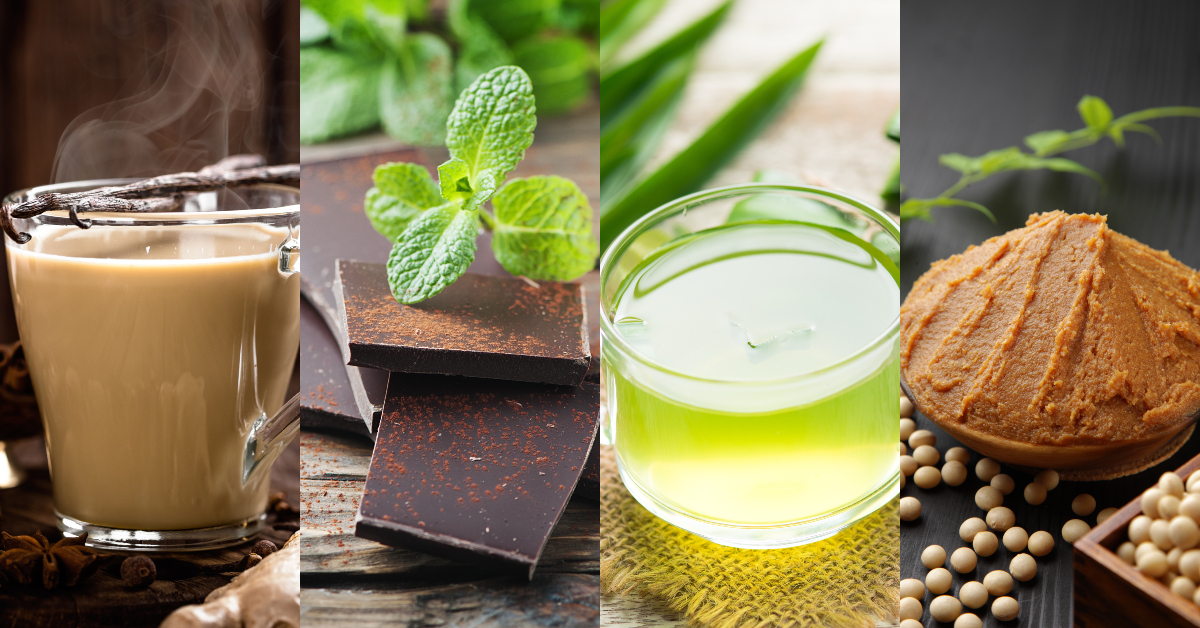Organic and natural foods are booming, accelerated by the major demographic shift towards Millennials and Gen Zs with purchasing power. Standing for responsible indulgence, organic food is often viewed as healthier, tastier, and higher in quality, as well as better for the environment. Food and nutrition go hand in hand for today’s conscious consumers, whom have become increasingly attentive to the food labels attached to their purchases.
PART 1: Symrise’s North American Top 11 Flavor Trends for 2019
As noted in Symrise’s annual flavor trends report, 2019+ Top Trends for North America, consumers are looking for products that get back to basics—to a pre-industrialized food system that focuses on natural, whole, and nutrient dense ingredients—while also taking a closer-to-nature approach to processing. The richness and maintenance of (local) nature take center stage, and the sustainability of buying seasonal, artisanal products becomes realizable. Below we take a deeper dive into some of the top Natural Goodness trends in store for 2019.
Floral flavors may have blossomed in 2018 but in 2019 and onward, we anticipate this trend to be in full bloom. Expect to see more florals in ice cream, cocktails, smoothies, and even packaged confectionery products, with flavors such as honeysuckle, jasmine, lavender and rose leading the way. Blossoming Chai – where spicy and fragrant chai is mixed with florals or blossoms – is also a growing concept within food service and retail to look out for.
The savory arena will also leverage more florals this year, focusing mainly on vegetable blossoms—such as chive blossoms as well as broccoli flower (mature broccoli heads that have sprouted yellow flowers). Another savory floral to take note of is the dandelion. Not just an unwanted, overgrown weed, dandelions are tasty, nutritious and delightfully bitter. From roots to leaves to flowers, the plant makes a great addition to any meal or beverage, with many bartenders using dandelions to create a vibrant yellow syrup for cocktails.
RELATED: 3 Key Healthy Lifestyle Trends and the Flavors They've Inspired
Audacious herbs made a big impact in 2018, introducing many mainstream consumers to unique global flavors like sumac, epazote, Thai basil, and beyond. The flavorful shiso will continue to move far beyond its popularity as a sushi garnish to be incorporated into everything from light and airy cocktails to salads and desserts. Additional movers and shakers in the herbaceous category include chocolate mint—a fragrant member of the mint family with a hint of chocolate patty flavor—as well as pandan, a green-hued herb known for its nutty flavor. Pandan has expanded its traditional use in Asian cuisine and now provides flavor profile builds in desserts such as the Coconut Pie with caramelized coconut sugar and pandan sauce from Momofuku Ssäm Bar.
Local indigenous herbs like woodruff will continue to play their part, as well. A sweeter herb known for its medicinal properties, woodruff has proven its versatility by popping up on all sorts of culinary menus. Notably, the herb has become a staple ingredient within beverages at top-tier bars and restaurants. At Patent Pending, a chic cocktail bar in New York City, the team behind the bar has created The ‘Twain, which features woodruff along with tequila, alpine liqueur, gin, pear, fuji apple, lemon, and nutmeg. Additionally at Canadian-based Brewster’s Brew Company, brewmasters have concocted an infused sour raspberry beer made with sweet woodruff syrup.
Chefs, pastry chefs and mixologists have given consumers access to global cuisines for decades. Now we see professionals looking to push flavor boundaries in new ways. In order to bring out an abundance of flavor in new concepts, classic preservation techniques are often used, including smoking, fermenting, and aging. While these methods will continue to boom in 2019, we will notice more unique twists on the classics, such as a new wave of smoke, koji and miso preservation, infusions, and candied fruits like citrus, ginger, and kumquats for ultimate flavor impact.
The use of smoking is no longer only seen for enhancing meats. Going beyond the grill, chefs are utilizing the technique for sweets and beverages, such as smoky ice cream, smoked chocolate, and smoky cocktails. Top Pastry Chef Maya Erikson takes a global approach to smoking through a classic Thai method—by pressing a black incense candle infused with spices for smoking pastries, egg yolks, candies. Preservation methods such as curing and barrel aging are getting a refresh through the use of fermenting agents such as koji and miso on meats and vegetables – working to maintain ingredients’ flavors in new ways. At Emmer & Rye in Austin, Texas, chef and koji-enthusiast Kevin Fink serves up seasonally inspired American cuisine dim sum-style, with items such as koji-preserved butter leaf highlighted on the menu. For dessert, Fink offers a unique koji egg cream with wild dewberry, juniper, thyme, and coriander.
Our next flavor trends article is coming soon and you don't want to miss it - SUBSCRIBE HERE!






